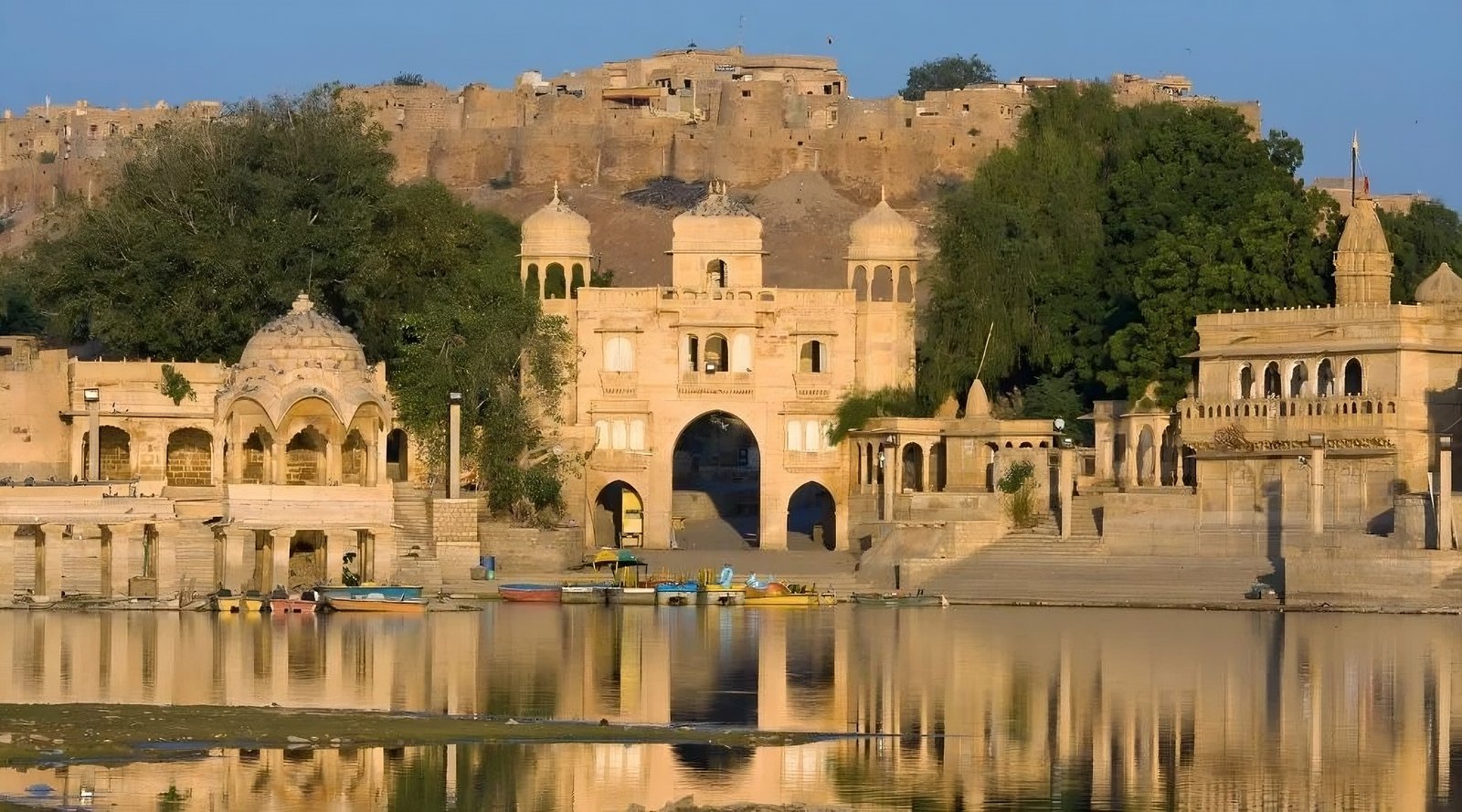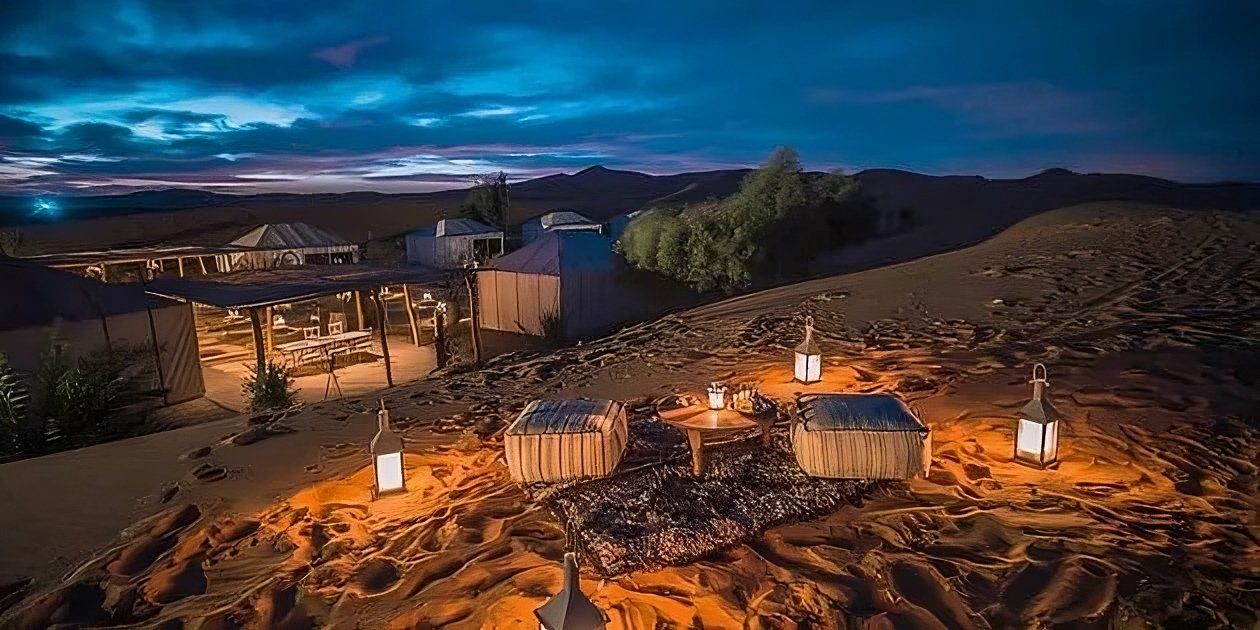Jaisalmer, often called the “Golden City,” is known for its stunning desert architecture, including its intricate stone carvings. The city’s history, culture, and natural surroundings have all played a significant role in shaping its architectural style. The use of stone, particularly yellow sandstone, is prominent in the city, giving it a unique charm that attracts visitors from around the world. In this article, we will take a close look at the beautiful stone carvings and desert architecture that make Jaisalmer so special.
The Charm of Yellow Sandstone
The architecture of Jaisalmer is largely characterized by the use of yellow sandstone, which gives the city its golden hue. This type of stone is found abundantly in the Thar Desert and is known for its durability and aesthetic appeal. The yellow color of the sandstone enhances the city’s beauty, particularly at sunset, when the buildings glow in the soft light. The use of sandstone for construction dates back centuries, with intricate carvings and designs adorning many of the buildings and monuments.
One of the most notable examples of Jaisalmer’s use of yellow sandstone is the famous Jaisalmer Fort, which stands as a testament to the region’s architectural brilliance. Inside the fort, you will find numerous buildings and structures that are decorated with beautiful stone carvings. These carvings are not just for decoration, but they also have cultural and religious significance. The detailed carvings often depict scenes from Hindu mythology, daily life, and the natural world.
The Art of Stone Carving in Jaisalmer
Stone carving in Jaisalmer is an ancient craft that has been passed down through generations. Local artisans have mastered the art of creating intricate designs that reflect the rich cultural heritage of the region. The carvings often include geometric patterns, floral motifs, and depictions of animals and deities. These designs are meticulously carved into the walls of temples, havelis, and palaces, showcasing the skilled craftsmanship of the artisans.
One of the most famous forms of stone carving in Jaisalmer is the jharokha, a traditional window or balcony, which is often intricately decorated with elaborate carvings. These carved windows not only provide ventilation and light to the interiors but also serve as a decorative feature that enhances the aesthetic appeal of the building. The jharokhas are an iconic feature of Jaisalmer’s architecture and are found in many of the city’s most important structures.
The Influence of Jain Architecture
Jaisalmer is home to several Jain temples, and Jain architecture has a significant influence on the city’s overall design. Jain temples in Jaisalmer are known for their intricate stone carvings and detailed sculptures. The temples’ facades are often covered with elaborate designs that depict various gods, goddesses, and religious symbols. The craftsmanship of these carvings is exceptional, and they are considered some of the finest examples of Jain art.
The Jain temples in Jaisalmer are not just places of worship but also serve as cultural landmarks that attract tourists. They offer a glimpse into the spiritual life of the region and are a testament to the rich history of Jainism in the area. These temples are often located within the fort complex and are an essential part of the city’s heritage.
The Role of Havelis in Jaisalmer’s Architecture
Havelis are another important feature of Jaisalmer’s architectural landscape. These grand merchant houses, built by wealthy traders during the 16th and 17th centuries, are famous for their ornate stone carvings. The havelis are adorned with delicate floral patterns, intricate latticework, and carvings that depict scenes from daily life and mythology.
One of the most famous havelis in Jaisalmer is the Patwon Ki Haveli, which is known for its stunning stone carvings. The haveli consists of five different sections, each showcasing unique architectural styles and carvings. The intricacy of the stonework in the havelis reflects the wealth and status of the merchants who built them, as well as the skilled artisans who created the carvings.
Preservation of Jaisalmer’s Stone Carvings
Over the years, the stone carvings in Jaisalmer have faced the threat of erosion due to the harsh desert climate. The intense heat and dry conditions can cause the stone to crack and fade over time. To preserve the city’s architectural heritage, local authorities and conservationists are working to protect and restore the stone carvings.
Efforts are being made to clean the carvings, repair any damage, and protect the structures from further wear and tear. Visitors can also play a role in preserving Jaisalmer’s heritage by being respectful of the monuments and refraining from touching or damaging the carvings. By doing so, future generations will be able to appreciate the intricate beauty of these stone carvings for years to come.
Exploring Jaisalmer’s Architecture on a Sightseeing Tour
If you are planning a trip to Jaisalmer, a Jaisalmer Sightseeing Tour is the best way to explore the city’s incredible architecture. These tours typically include visits to the Jaisalmer Fort, Jain temples, havelis, and other historic buildings that showcase the city’s architectural heritage. You can marvel at the stone carvings up close and learn about the rich history of the region from knowledgeable guides.
A sightseeing tour will also give you the opportunity to see the different styles of stone carving that have evolved over the centuries. From ancient Jain temple carvings to the ornate designs of the havelis, each structure tells its own unique story. These tours are an excellent way to immerse yourself in the beauty and history of Jaisalmer.
Where to Stay in Jaisalmer
For a comfortable stay while you explore Jaisalmer’s stunning architecture, consider booking Deluxe Rooms in Jaisalmer. Many hotels and resorts in the city offer luxurious rooms with modern amenities, allowing you to relax and unwind after a day of sightseeing. Staying in a deluxe room will ensure that you have a comfortable and enjoyable experience as you discover the rich heritage of this golden city.
Conclusion
Jaisalmer’s stone carvings are an integral part of the city’s architectural heritage. From the detailed carvings in the Jain temples to the ornate designs in the havelis, these stone artworks reflect the region’s rich culture and history. As you explore the city, take the time to appreciate the intricate craftsmanship and the stories behind the carvings. Whether you are staying in Deluxe Rooms in Jaisalmer or embarking on a Jaisalmer Sightseeing Tour, Jaisalmer’s stone carvings will leave you in awe of the beauty and history of this golden desert city.




